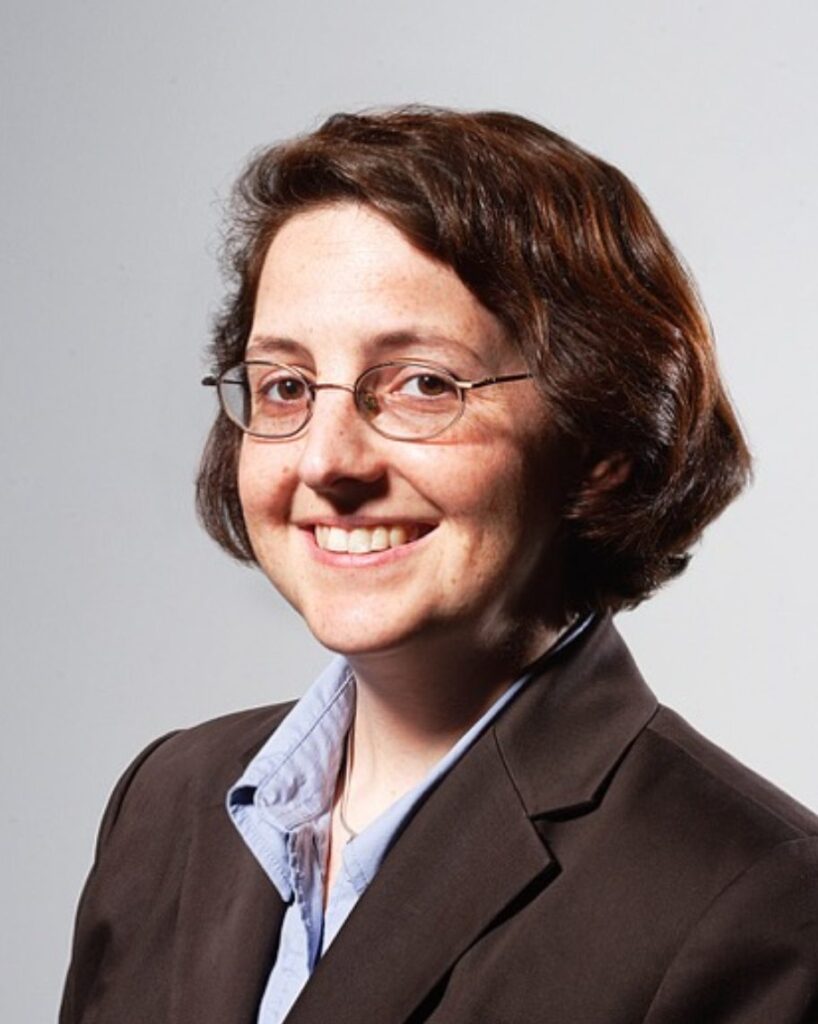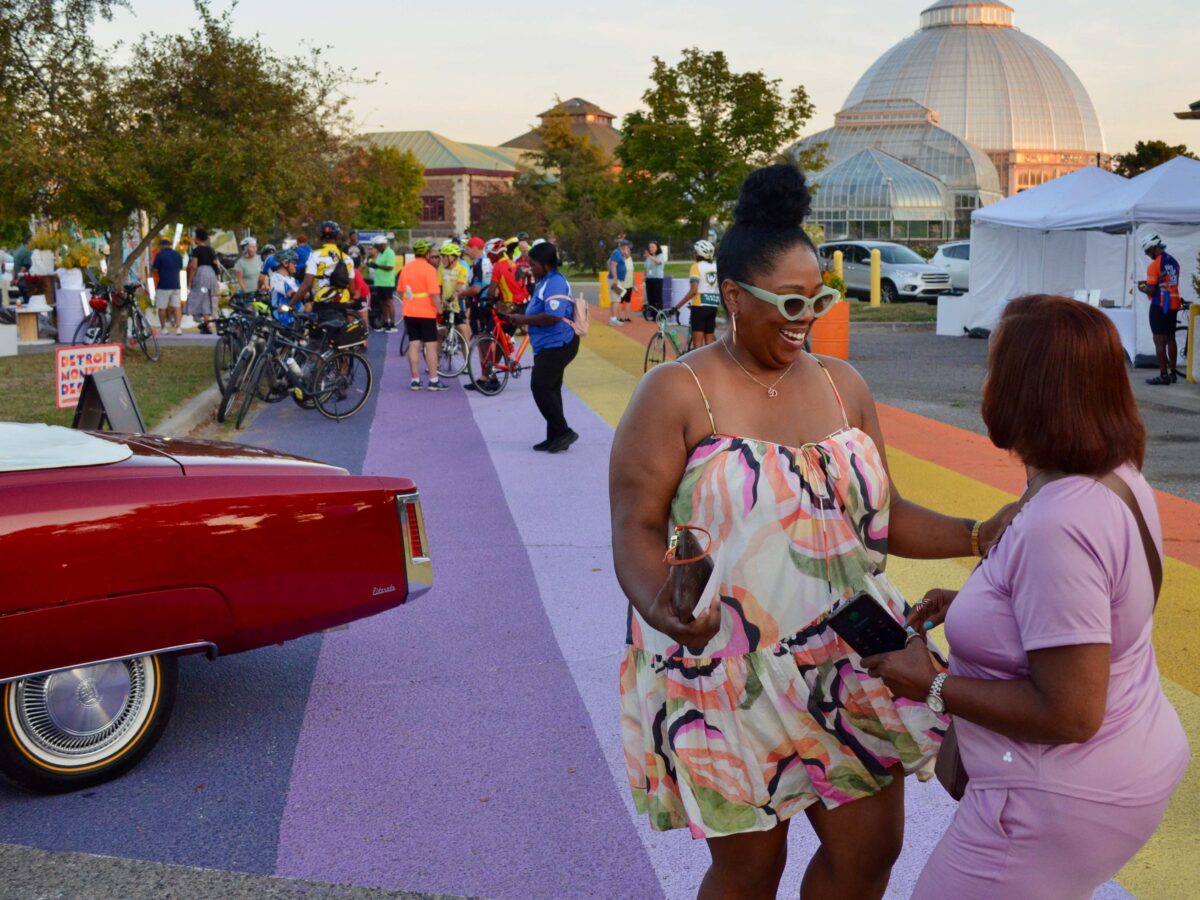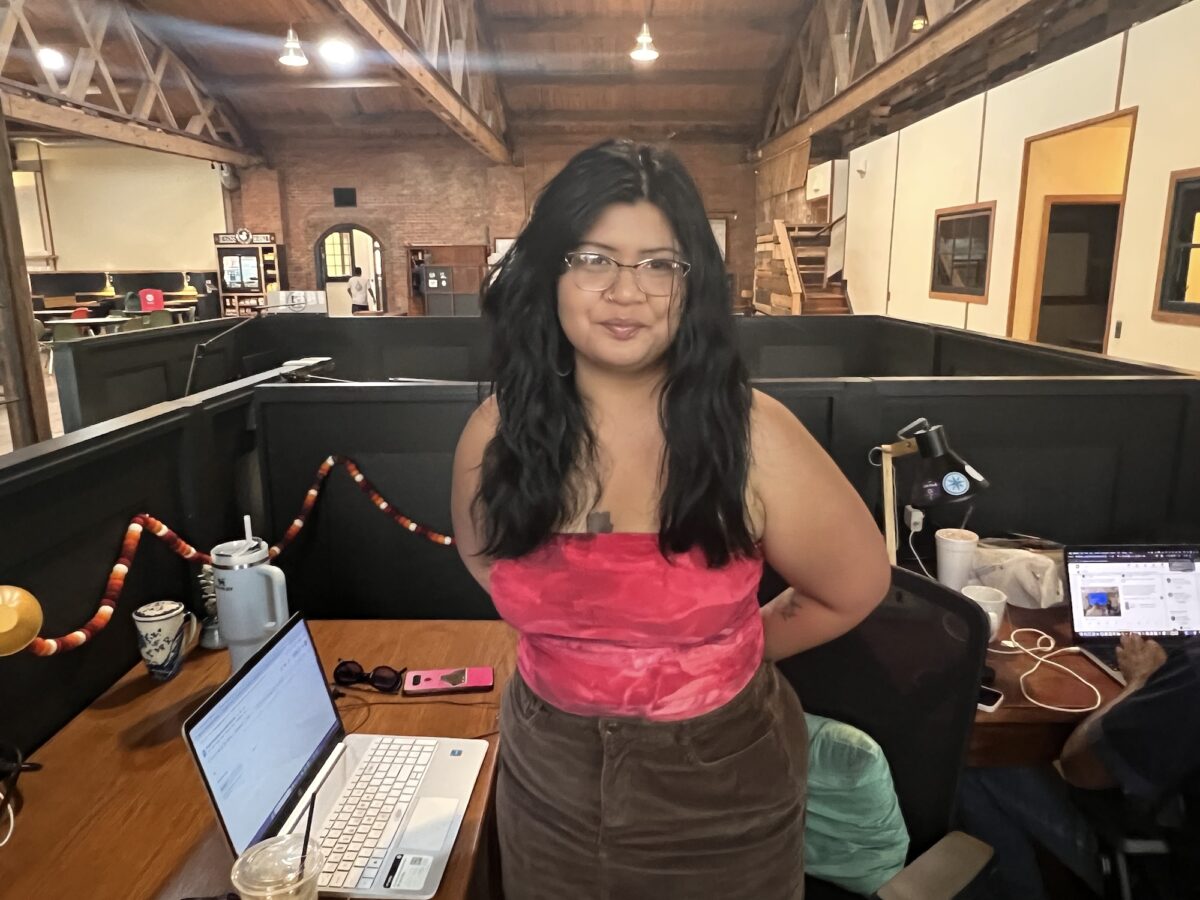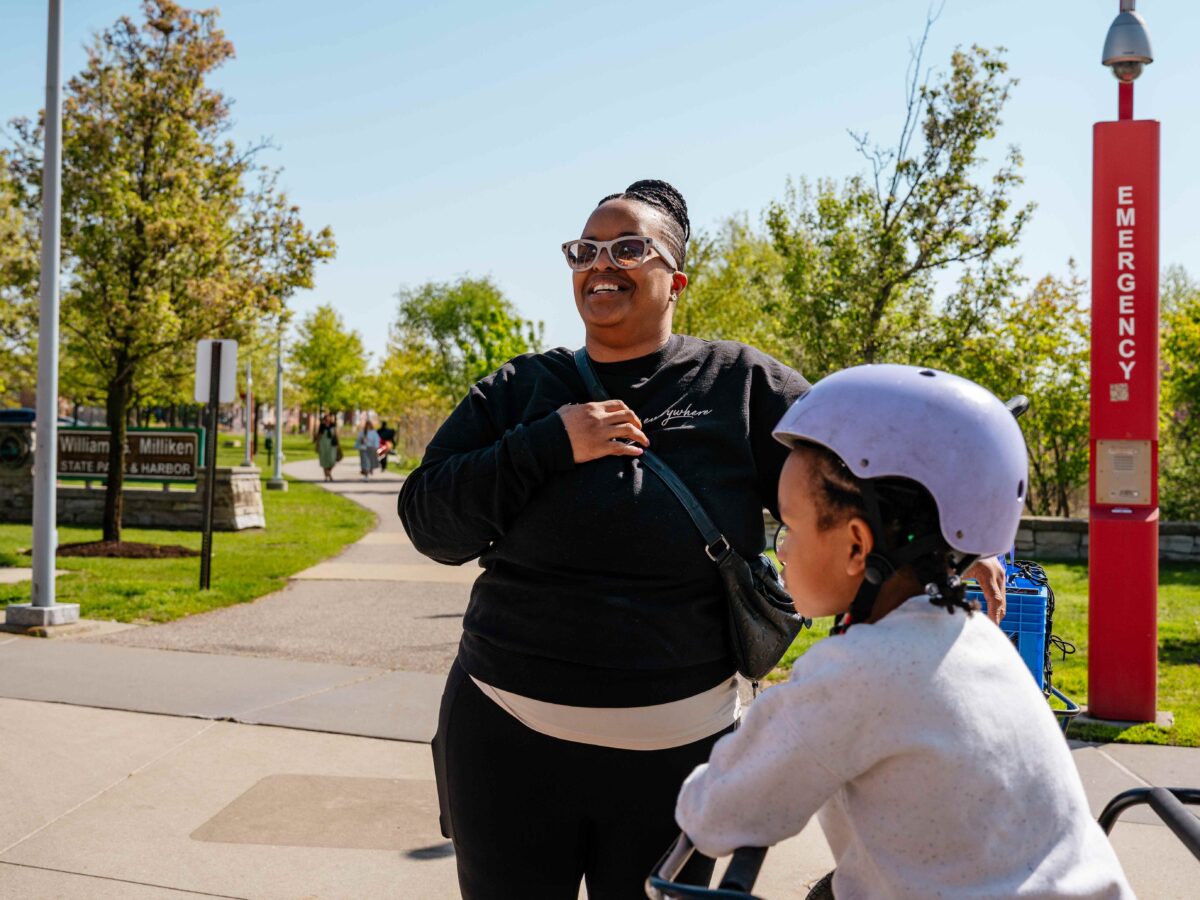Overview:
- Transportation Riders United Executive Director Megan Owens speaks about the future of transit in Metro Detroit ahead of a major transit vote in Wayne County in 2026.
- Expanded transit throughout Oakland County and the D2A2 and DAX buses to Ann Arbor and the airport are among the biggest transit wins in the last 25 years, Owens says.
- One of the lessons from the Oakland County vote, Owens says: "If people know about it, people support transit investments."
For a quarter century, Transportation Riders United has been pushing Metro Detroit toward a more connected future — one bus route, one ballot measure, one advocacy campaign at a time.
This year marks TRU’s 25th anniversary, and the organization recently celebrated with a gala honoring the riders, advocates, and elected officials who’ve championed public transit in a region long dominated by cars and highways. From its unusual origins fighting freeway expansions to recent wins like countywide transit in Oakland County, TRU has weathered the Great Recession, Detroit’s bankruptcy, and a pandemic, all while keeping the region’s transit conversation alive.
We sat down with Megan Owens, TRU’s Executive Director, to talk about the organization’s hardest-fought battles, its most surprising victories, and what comes next as Metro Detroit prepares for another major transit vote in Wayne County next summer.
TRU has an unusual origin story: it started by fighting highway expansions rather than initially advocating for transit. Can you tell me about those early battles?
There was actually a national town hall on sustainability held in Detroit in 1999, and a young 14-year-old from Grosse Pointe, Steven Hands, was invited to be part of the panel with all these bigwig elected officials. The event ended with a call to action: What are you going to do next?

People started saying, “There really ought to be a group focused on transit. Somebody ought to do something about that.” But when they looked into it and talked to folks at MDOT or SEMCOG, there was no RTA at the time, and these larger institutions were so focused on highway expansion projects. Billions of dollars were being planned to extend I-375, widen I-94, and widen I-75—but they weren’t even considering returning to commuter train service or light rail. It was seen as a completely separate world.
So that’s a lot of what TRU started drawing attention to: how absurd it would be to spend these billions to widen highways in a city that’s not growing. That money on highway widening would not do anything to boost economic development or encourage people to live in the city. It would not do anything to decrease sprawl into fields and farmlands.
So Steven Hands became a co-founder?
Yes! Steven and his mom, Karen Kendrick-Hands, were really TRU’s founders. She was an environmental attorney who had fought to close the Conner Creek power plant on the east side because her other son had had one too many trips to the emergency room for asthma. After fighting to close Conner Creek, she looked at where all the rest of this air pollution was coming from, and so much of it was coming from highways. So she kind of shifted gears from power plants to highways.
Steven had had a chance to go to New York and Paris and saw these really vibrant cities where he could get around on transit. Then he came back to Detroit and rode the bus as a school kid, but saw just how hard it was. Even as a young teen, he made the connection between transit and urban vitality.
People got involved for a wide range of reasons — environmental sustainability, urban development, or just plain old bus riders like Marcia Yates, who always joked that she’d be a decade younger if she hadn’t wasted so much time waiting on late buses. Whether it was from an environmental perspective or a “just make the damn bus show up on time” perspective, people started getting together and formed TRU.
When was TRU officially founded?
It depends on what you want to call it. 1999 was when people started getting together. 2001 was when we got the official 501(c)(3) status. I usually split the difference, which is why we say this is our 25th anniversary.
Over 25 years, what have been the biggest setbacks or failures?
On the victory side, I-375 didn’t get extended into the riverfront, and we now have this award-winning riverfront. There’s at least consideration of a restorative boulevard now. But on the losing side, I-75 did get widened. We slowed them down and were a big part of why that last section has the HOV lane — we kept pushing on them about why they were widening the freeway when local communities didn’t want it and we can’t afford what we have. Their compromise was adding it as an HOV lane. We didn’t necessarily think that was the answer, but it was less bad than it could have been.
Similarly with I-94, some of the early proposals wanted to not only add lanes on both sides but also develop service drives all the way along. They were going to have to take out over 100 different homes and businesses, including United Sound Studios. We slowed them down, minimized the footprint, and convinced them that in a city you don’t need service drives along the whole thing. They’re replacing most of the bridges and making them into complete streets bridges with bike and walking infrastructure. So another case where we were able to make it less bad.
What about service cuts?
The hardest times were the bus service cuts that happened after the Great Recession. So much of SMART’s revenue is based on property values, and when property values plummeted, they had to make some pretty serious cuts. We were able to work with them to do a millage increase — from 0.6 up to 1 mil — to minimize some of the worst cuts, but to this day, Downriver still has rather minimal service.
When Detroit went through bankruptcy, there were literally city council members asking, “Do we really need to keep DDOT? Can’t we give that to SMART or outsource it somehow?” We had to talk them off a cliff. Public transit is a public service like public schools, public libraries, and public safety. All of those things need public investments. They can’t free market.
And then there was the 2016 RTA millage failure.
Yes, that was the biggest missed opportunity. When I first came on at TRU, we realized there was no one in charge of transit. We fought for several years to get the RTA created so we could have a single agency coordinating planning and seeking funding for transit. That happened in 2012.
One of the biggest barriers in our region is that we invest about a third per capita of what most major metropolitan regions invest in transit. So we got a measure on the ballot in 2016 across all four counties. 1.5 mills would have expanded transit into communities that didn’t have it, developed rapid transit on several key corridors, enhanced ticketing and technology, and improved paratransit for seniors.
894,000 people across Metro Detroit voted yes to tax themselves for transit, but 913,000 voted no. So with less than 1% defeat, in the crazy Trump election — when Trump was pushing such a powerful message of “screw your neighbor, everyone’s an enemy, government’s incompetent” — it was hard to campaign for “invest in this community service even if you don’t personally use it.”
What would you say are the two to three most significant wins over 25 years?
Expanding transit throughout all of Oakland County is huge. For years, places like Novi and Rochester were basically “if you don’t drive, you can’t go.” We were told for years that nobody in those communities wanted transit. Not only did we get it on the ballot and passed, but a lot of those communities voted for it. The service is now running, and it’s really cool to see that the rural providers — North Oakland Transit Authority and West Oakland Transit Authority — nearly tripled the amount of rides they provide to seniors and people with disabilities.
Then there’s the D2A2 and DAX: the Airport Express. DAX goes right from downtown to the airport on a luxury motor coach for six bucks, running every hour from 5 a.m. to midnight. The D2A2 goes from downtown Ann Arbor to downtown Detroit, again every hour for six or eight dollars. Pretty broad hours.
The Oakland County countywide transit vote passed really well. What made that successful, and what lessons are you applying to the Wayne County push?
One of the lessons is: if people know about it, people support transit investments. That 2016 millage was the only time a broad population of Metro Detroit had a chance to vote on transit and voted it down. We’ve lost once. When people have a chance to vote and they know it’s going to produce positive benefits for their community, there’s pretty broad, widespread support. But you can’t take for granted that people know about it.
Oakland County and SMART did an awful lot to make people aware of the services that exist and the service that could exist. We also worked with a great community coalition —Oakland Forward, MOSES, Fund Our Future, Clean Water Action — who knocked on hundreds of thousands of doors and talked to people about the benefits.
What’s happening in Wayne County now?
Transit will be on the ballot in Wayne County this coming summer as a countywide entity. Everyone in Wayne County, including Detroit, will be voting on a property tax measure to fund transit. We are cautiously confident that people will support it.
They’re working right now to develop a plan of how they’ll utilize the funds raised. SMART is the largest of the providers, but there will likely be some new service added—like a Michigan Avenue or Ford Road bus route. Some funds will likely fund expansions within the city of Detroit. There will be new services in places like Livonia and Plymouth-Canton. Some may be on-demand services, some may be fixed-route buses. Wayne County and the various municipalities are working with SMART and RTA to map out what they could provide.
Looking ahead to the next decade, if TRU is wildly successful, what does Metro Detroit’s transit system look like?
We want to double DDOT so that most Detroiters can count on a bus running every 10 minutes to consistently and conveniently get them where they need to go. I really hope we can finally get some real rapid transit expansion — upgrade the FAST buses, make sure they’re running at least every 10 minutes, and give them boosts like traffic signal priority or dedicated lanes so riding transit can truly be competitive with driving.
We’re excited to help expand those improvements around the state. Even though Michigan’s population hasn’t grown in 40 years, the state is still spending hundreds of millions of dollars every year widening roads. We’re looking at shifting how MDOT prioritizes projects. Can we get them to give community values like access, climate, and safety just as much priority as potholes and traffic congestion? If we can change the metrics by which MDOT evaluates projects, we’re confident we could shift more of their $8 billion a year budget into not only transit and rail across the state, but also safer streets, better sidewalks, and dedicated bike lanes.
Driving will always be an option, but the goal is that it not be the only option.
Any chance for another regional transit millage?
Yes. I can’t say anything about a timeline, but I don’t see any way we can substantively improve transit without a dedicated regional transit tax. We’re focusing in the short term on doubling DDOT’s investments and expanding transit throughout Wayne County. Maybe next we’ll look at all of Washtenaw County. But the only way we can get rapid transit investments is with an increase in funding.
I definitely expect in the next couple of years we’ll be working to put a new regional transit ballot measure before voters for the second time only.
Why has it been 10 years with no revisit?
Largely because the Macomb County members on the RTA board and broader Macomb County leadership say “we’re fine on transit, we don’t need anything more.” They’ve basically vetoed any effort to put a regional transit funding measure on the ballot. Right now, there cannot be a new measure on the ballot until all four counties and the city of Detroit agree.
There were substantial efforts in 2018, 2019, and even right before the pandemic to change that legislation to say there’s no reason two or three counties can’t put a measure on the ballot if they want to invest in transit. There isn’t the legal mechanism right now, and that needs to be changed at the state level.
Anything else you want to add?
One of the other wins we’ve had is really broadening the recognition of the benefits of transit. When TRU started, a lot of people were like “transit? Who cares? We’re the Motor City.” It wasn’t even on the radar. Even when I got started, there was a lot of “it’d be nice, but it’s never going to happen here.”
Now we’ve gotten to a point where there’s broad recognition that this region needs better transit, and we’re at least debating how to make that happen. The environmental community has really stepped up in embracing transit as a critical part of the climate solution: Sierra Club, NRDC, Ecology Center, Southwest Detroit Environmental Vision, We the People of Detroit, Groundwork Center up north.
That’s one of the reasons we’re creating this statewide coalition. There’s a ton of folks who agree this has got to happen: not just environmental groups, but the disability community, education advocates, workforce development, economic development, health and hospitals. It may not be their No. 1 priority, but it might be three, four, or five on the list of things that would benefit their communities. If we can bring those groups together in a coordinated fashion, we can make some major change across the region and the state.
MORE FROM PLANET DETROIT
Detroiters preview Belle Isle Commons concept: ‘The vibes are just immaculate’
The Belle Isle Commons concept would create a centralized hub near the island’s most popular destinations, the side-by-side aquarium and conservatory.
How do transportation struggles affect the health of Detroiters? New project aims to find out
In Detroit, where public transit often falls short, journalist Eleanore Catolico will investigates how lack of reliable transportation impacts health care access for older adults, people with disabilities, and those managing chronic conditions, through a partnership with Planet Detroit’s Neighborhood Reporting Lab and the USC Annenberg Center for Health Journalism.
No car, no problem: A day with Socially Chrissy, Detroit’s bold biking mom
Through her platform, Socially Chrissy, Detroiter Christina Debose documents her experiences and advocates for improved public transit and bike-friendly infrastructure.





